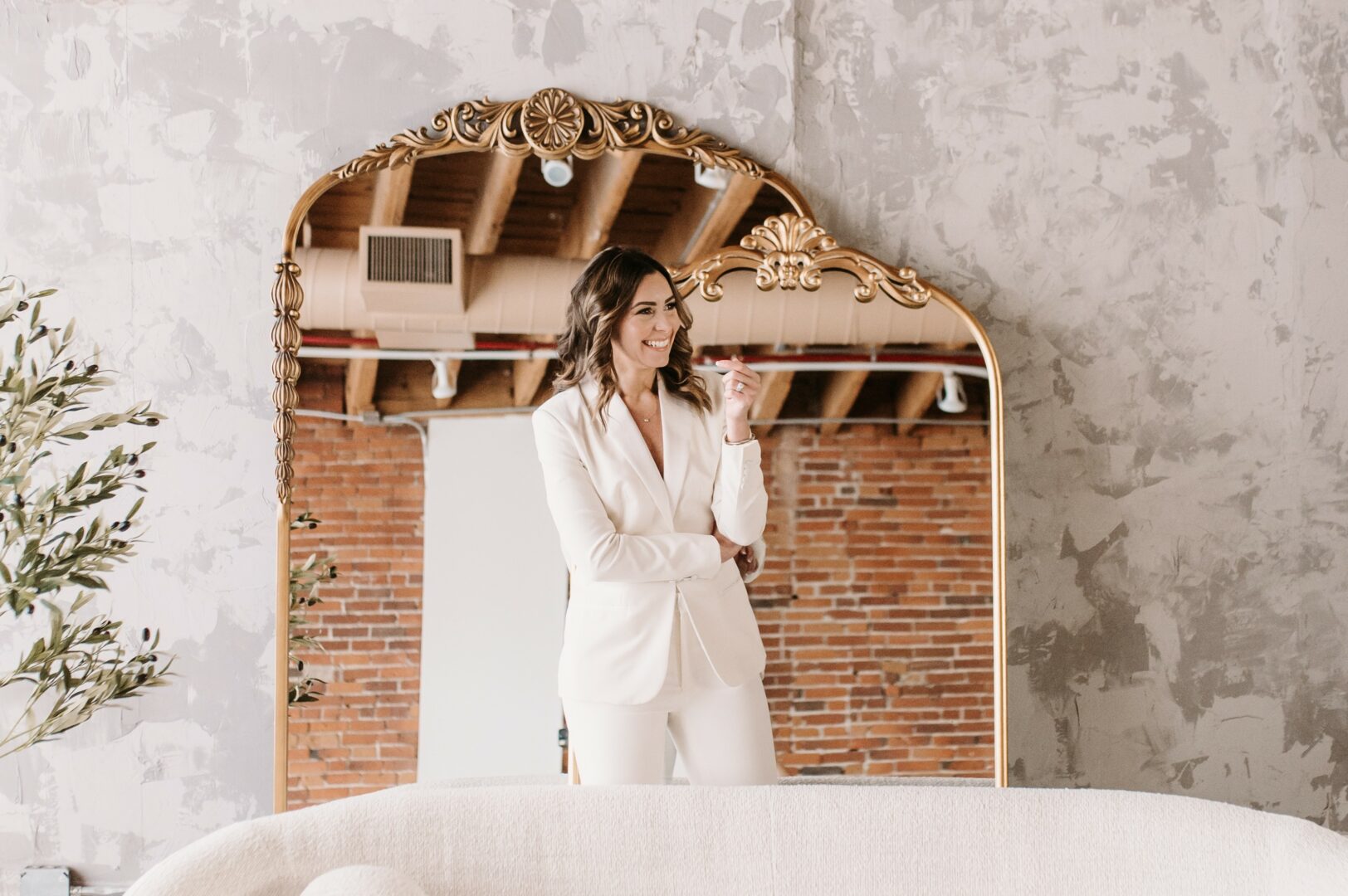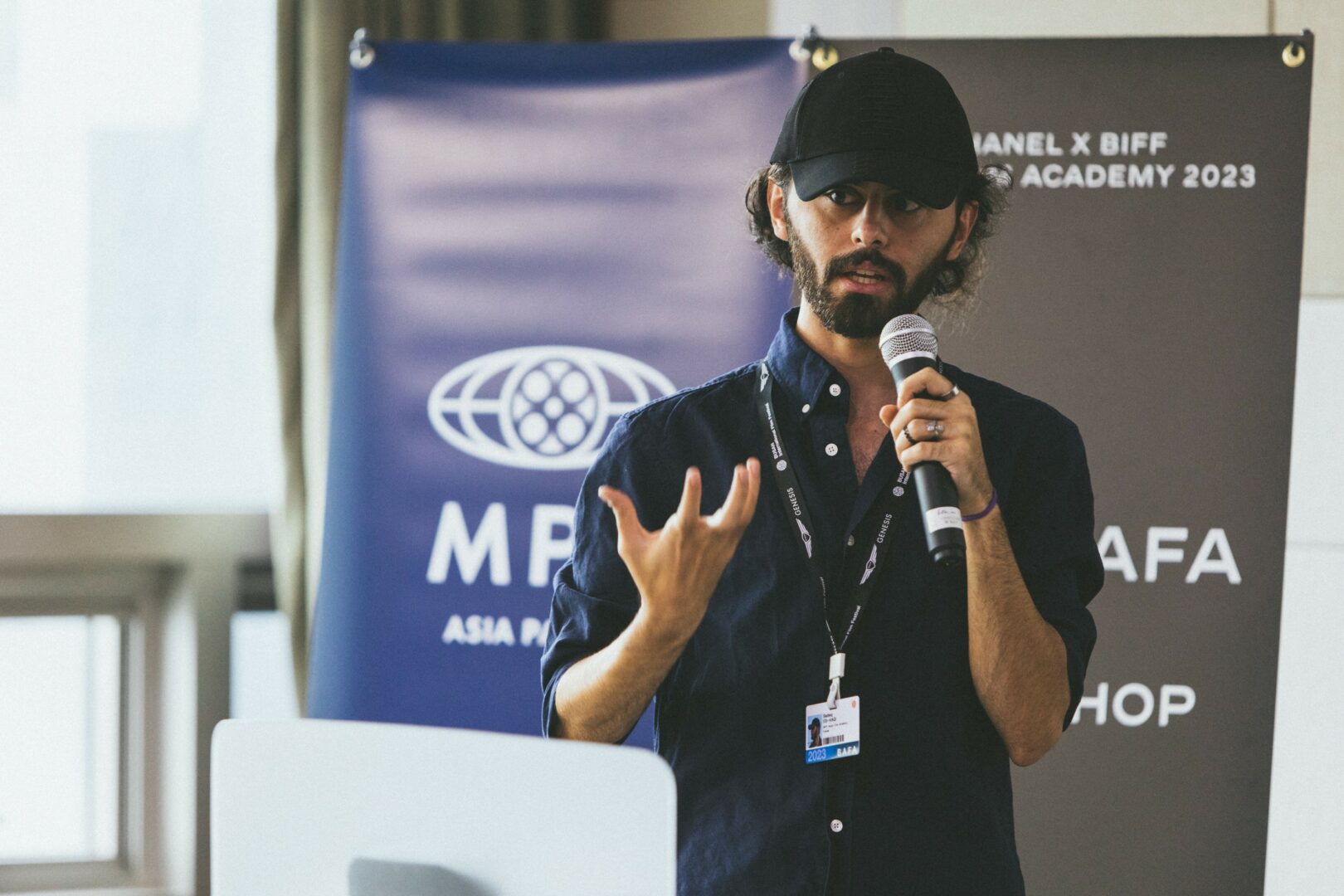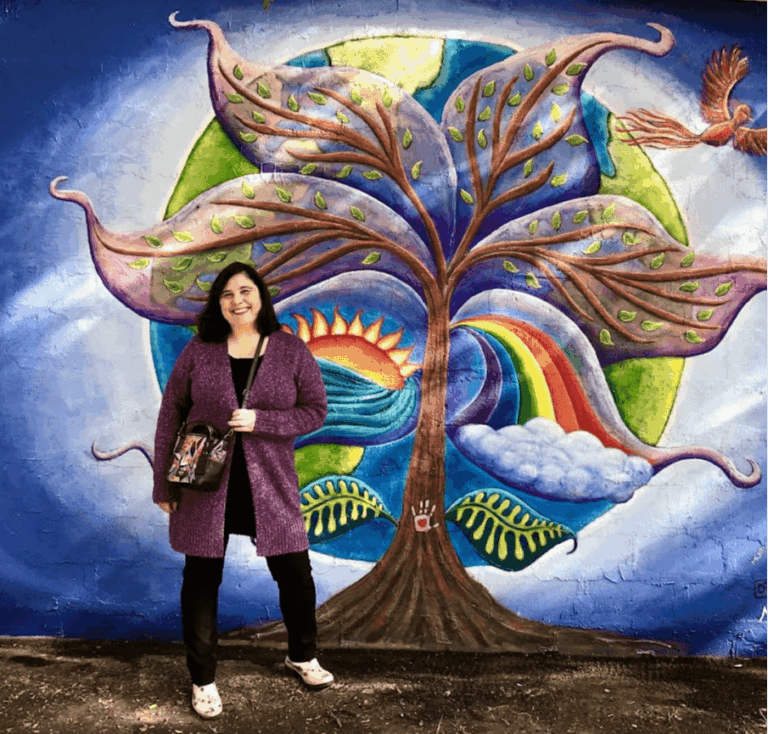We were lucky to catch up with Jenny Toth recently and have shared our conversation below.
Jenny, so good to have you with us today. We’ve always been impressed with folks who have a very clear sense of purpose and so maybe we can jump right in and talk about how you found your purpose?
Having turned 51 last year, I am trying to find peace with accepting that my life hasn’t had a singular, defined purpose. I have often wanted a bolt of lightning to come from the sky and knock me down with a clear path and calling. “You are supposed to be a wildlife vet!” a celestial voice would roar, or “you are meant to paint all the time like Picasso!” I thought life would be so much easier and happier with a singular focus, a clear understanding of what I wanted to do all the time. Then with enough devotion and effort, I would get really good at my purpose, and find success and maybe even fame. My parents had this kind of path. My father was a research scientist, my mother a published writer, and my stepfather a locally well-known architect. They never seemed to have doubts about their direction. For me, instead of a bolt of lightning to illuminate my way, my path has been one more of stumbling around and trying out different light switches. And I think in a way my purpose is one of acceptance that this is in fact my journey and enjoying the smaller light shows.
I was blessed with many different interests and talents but cursed with self-doubt and indecisiveness. I second guess many decisions, hemming and hawing over big and sometimes not so big decisions. Over time I realized that life isn’t about reaching a milestone at which point life becomes clear and focused and happiness is found. When I was in college, I thought if I could get all As and stay skinny and fit, my life would be easy. Then I thought if I could find my soulmate and partner, life would be so satisfying. Then if I could have kids, my life would feel complete. I now realize, having found a wonderful partner and having two young boys, and a satisfying career as a painter and professor, that life isn’t made up of a checklist and once you cross off milestones you feel radically different. Life is messy. And it’s full of bumps and detours. Last year I had breast cancer, and my purpose shifted from professor and artist to healing. Becoming a new mother was another purpose that took precedence.
My journey so far has been more trying to find ways to feed my soul with what I love doing, trying to support myself and then also my family (which I started in my forties) and feel as though I am part of making the world somehow better for having me in it. I have spent a lifetime agonizing over the question “What is my purpose?” and often have felt surrounded by people who seemed very content and secure in their answer to that question. At Yale School of Art in the late 1990s, my fellow painters seemed to never doubt their path. They couldn’t imagine NOT making art. I jumped right into the program but was secretly worried I didn’t belong in the club of the singular-focused. I struggled with figuring out what I wanted to say in my art and why. Mostly, I was jealous of my classmates who didn’t worry whether their chosen path was the best one for them, if they were good enough, etc. But I kept putting one foot in front of the other, having faith that I was following some path, even though I wasn’t always sure it was the best one I could possibly have followed.
I think for me it is more productive to ask, “What makes me feel most alive?” And my answers fluctuate between my love of animals, travel, making art, connections of the heart (with family and friends). So, in terms of my career, I have tried to combine these different threads. My art over time has focused more on animals, which I spend time studying and drawing. You can often find me drawing at the zoo or an animal sanctuary. My art also includes the places we travel to, or I borrow images my children have drawn. I strive to bring my own experiences into the classroom as a college professor. Over the years, I am able to find ways to build a new path out of the many small detours of interests I hold dear.
Where did you get your resilience from?
I believe out of necessity people are resilient, we all are. Everyone has set-backs, challenges, and at some point, faces death of a loved one. If we live through these moments, we are resilient.
In some ways I have been very lucky. I was a born as a white American with means to have an excellent education. These advantages cannot be emphasized enough. I also had a supportive mother who encouraged my intellect and imagination. On the other hand, I have had personal challenges such as living through my parents’ divorce at a young age, illness as a nine-year-old, and shared custody with a sometimes rageful parent. Later I developed an eating disorder and struggled with starting college on the East Coast, far from my midwestern friends. After college I grappled with loneliness and anxiety and finding my purpose (see my previous answer). I became a mother late in life (not easy!) and recently had cancer. So despite my appreciation of the advantages I was born with, I have had challenges that demanded resilience.
I think personal resilience comes from a number of places. Some inspiration comes from the stories we read such as biographies of people that have faced extreme adversity. We also hear stories from our own family that model resilience. For example, my grandmother lost her husband in 1947 when he was in his thirties, and she had to work to raise two girls as a single parent. I think we absorb resilience from our friends and community as we see others survive tragedy or come together to support each other, such as during the pandemic.
As a sophomore in high school, I was on the track and field team. I loved the hurdles, but in my first race, I knocked down every hurdle and came in last. I felt humiliated. My best friend took every lunch hour for a few weeks to keep me company while I practiced, encouraging me. The next race, I came in first. In a way, friendship gave me the resilience I needed, having someone believe in me.
In graduate school at Yale, I had a devastating and publicly embarrassing first final critique at the end of the semester. I didn’t want to return for the second semester. Instead of dropping out, I adopted a cat from the shelter. “Boo-Boo” became a comfort and a presence I could feel at peace with. I had a much-improved final year critique and ended graduating with a painting prize. Not that my cat was the reason for success, but sometimes a loving presence can give you a way forward.
For me, my resilience has mostly come from the support of friends, family, and animals. When I am feeling stuck, speaking with family and friends often helps me find the door. Animals often have been present and a source of connection that help pull me through difficult times. This is why they are so often in my work.
When I was diagnosed with breast cancer and awaiting surgery, and then later in recovery, I found great comfort in drawing three particular birds at the Central Park Zoo in their aviary. The birds began to recognize me and I felt a connection to them. I found resilience, and a way to both mourn and find hope, in the process of drawing them. I find animals often model resilience and for me provide sustenance. I imagine most people find resilience through connection to others.
Great, so let’s take a few minutes and cover your story. What should folks know about you and what you do?
I am so many things, like we all are, and this includes my professional career as an artist and college art professor at a small liberal arts college in NYC. I have always valued imagination and creativity and wanted to have a life that celebrated these. I found painting incredibly engrossing and frustrating, something I couldn’t quite control and something that never turned out exactly as I had expected. In college, I could work very hard and earn a high grade on a paper, but with a painting, sometimes it would end up being a flop no matter my intentions. This inability to control the outcome fascinated me, and I loved the surprise I got from seeing something I made with my hands, so I became an art major.
My work revolves around certain themes, but always is based on direct observation of the material world. I think about the relationships between people and animals and strive for a mix of communicating honest emotions and sharing an authentic record of my perceptual experience.
My recent relief-paintings and sculptures explore themes of animal isolation and connection, captivity, and hope. I try to use humor and empathy as I combine imagery directly observed from nature into new compositions. I have tried to find ways of working directly from perception while using papier-mâché sculptures or my children’s drawings to make new worlds to paint from. This work led to the relief paintings which have become a hybrid of sculpture and painting. I use mirrors and windows in my paintings to compress space and overtly put myself into an environment to reinforce the kind of self-reflection and connection I feel to the world around me.
I recently had a solo show at Blue Mountain Gallery in Manhattan, and look forward to some upcoming group shows scheduled for this summer, fall and winter.
If you had to pick three qualities that are most important to develop, which three would you say matter most?
I always advise my art students to be flexible, risk failure, and put in effortful time. I believe that hard work and tenacity are much more important than a difficult-to-define concept of talent. I don’t really believe in talent. To me talent is more about trusting your instincts and imagination, and putting aside preconceptions of what art should look like. Some artists have an easier time painting an apple that looks exactly like an apple, but this doesn’t equate to them becoming a more interesting or better artist.
Because there are many artists, and not enough opportunities to sell and show your work, I also think that it is important to find joy in working. You can’t expect success or making a living being an artist. For me, although I can find painting or sculpting at times tedious, even boring and a slog, I also find magic in the process. Sometimes the magic happens when I step back and realize what I have created. Sometimes it is in feeling a color relationship click into place. There is something about making art that is different from other activities, something that both feels deeply a part of me and at the same time bigger than myself.
Finally, making connections and friendships are key to feeling a part of the art world. I encourage any artist to find community.
All the wisdom you’ve shared today is sincerely appreciated. Before we go, can you tell us about the main challenge you are currently facing?
I thrive on change. I like trying new materials in my art, visiting new places, living in new locations, meeting different kinds of people and trying new foods. At the same time, often success goes along with staying the course, becoming an expert in one thing, and becoming recognized as “the person who paints neon shark heads” or whatever that niche is.
My mother had a successful writing career but didn’t publish her first book at 40. I always saw myself as likely finding my way later in life. I married at 40 and had my second child at 43. I figured that 50 was the new 40 and maybe I would have a big career breakthrough around 50, but instead I got cancer and just, well, turned 50. My challenge has been both trying to accept that success might not look like it did for my parents and my own age. Choices don’t feel infinite anymore. Acceptance is hard and I think, like most things, I face the challenge of acceptance through friendships and deep connections.
In some ways, the number one challenge I am facing is one that we all confront at some point, and that is getting older. Last year I had breast cancer, and although it was the “best” kind I could have had, I needed a mastectomy and many tests to see if I needed more treatment. I also turned 50 right when this happened. Both these events reminded me of the limits of a lifespan.
As a first-year student at Smith College in 1990, I took a class on Buddhist poetry. I was resistant to the idea that there is nothing in life that is unchanging or consistent. Now I realize how much truth there is in the concept of impermanence. I believe we can always take new paths, change directions, and even careers, at any age. At the same time, I need to accept that doors will eventually close. For example, I took my young boys to Costa Rica this spring break, and I went zip-lining, waterfall repelling, and jumped off a cliff into the water far below. However, I don’t think I want to do those activities again! Recognizing and accepting loss and limitations comes with aging. I hope to learn from the wisdom, good humor, and friendship of others to embrace this.
Contact Info:
- Website: https://www.jennytoth.com/
- Instagram: https://www.instagram.com/jennyltoth/












